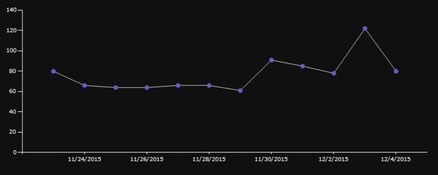Mailscape 365 - A Comprehensive Review
Editor's Note: Originally posted by Paul Cunningham (Microsoft MVP) on his blog, Practical365, this...


Almost every enterprise today is going through some type of transformation from historic compute solutions (i.e., “running IT in our data center”) to hybrid environments where workloads are distributed to specific locations, platforms, or providers based on business requirements. Even organizations seeking to be “cloud only” or “completely hyperconverged” will still have many environment types within their landscape. “IT everywhere” includes all the places we’d like to shift away from, like traditional corporate data centers, but won’t be able to due to technical debt and legacy systems.
The proven benefit of these environments is the ability to run workloads at the right time, from the right platform, at the right location, for the right price. However, managing the assets that support those workloads end to end is no simple task since these assets are no longer just on-premises, but are deployed in many venues. Your organization needs certain IT skills in-house to make hybrid IT a reality. Specifically, you need to be able to:
Virtualize beyond compute
Virtualization is often the first step in hybrid IT and can be the least complex of these four capabilities. The goal here is to use your existing hardware more efficiently so you won’t have to keep investing in underused hardware and facilities. Recommendations from Gartner:Standardize as many components as possible
This includes both your hardware and software. As a general rule, it’s not effective for organizations to have too much diversity and inconsistency across IT offerings. But when it comes to hybrid IT, it’s even more important to consolidate and standardize a diverse product set down to the basic building blocks. The simpler your services, the better your experience will be with hybrid IT.
After you have a plan for getting your IT lean and mean, you then need to make sure it stays that way. So a follow-on step here is to put a governance process in place and staff it with key people from the appropriate IT teams. When any group in your organization is talking about adopting new processes or applications, this governance team should help them make informed decisions about what’s already out there in the organization and how they can make sure to choose a solution that’s highly compatible with hybrid IT.
Automate manual, repeatable tasks
Automation is key to making your organization run faster and more efficiently. It helps avoid human error and frees people up for more complex, value-add tasks. Automation is also the secret sauce to hybrid deployments, as it’s how you make IT efficient and gain many key benefits promised by hybrid IT.
Ironically, one of the key reasons organizations cite for not automating more is that they don’t have time. It can take significant effort to find places to automate, set up the automation, and then test and monitor the process to make sure it’s doing what it’s supposed to. Forbes also warns that these projects have a tendency to sprawl and take longer than you hope. That’s usually because teams try to tackle complex tasks that might not be good candidates for automation. So start small with simple tasks that people have to perform time and again. Or perhaps the same task is even being done by multiple teams. The time you spend automating now can save significant time later.
Monitor and track
Given the number of moving parts that come with hybrid IT, a complete Exchange monitoring and Office 365 monitoring solution is especially critical. You need real-time visibility into what’s going on across your entire infrastructure—and a predictive idea of when service could degrade. Choose a product that gives you a consolidated view of both on-premises and cloud systems and that ideally has more capabilities than your existing monitoring solutions.
These capabilities are critical for anyone who’s looking to deploy effective hybrid IT. So if you lack this level of maturity in house, this is a great area in which to partner with an expert. Contact us to learn more about our solutions and for our free 14-day trial.

AmyKelly Petruzzella is a marketing executive who focuses on Microsoft Exchange, Office 365, and Active Directory trends, challenges, and business outcomes for enterprises. Over the years, AmyKelly regularly engages with Gartner industry analysts, and she has been recognized several times for Top 50 Microsoft Marketing Excellence. She is a frequent speaker and blogger and an industry veteran who advocates for women in technology.


Editor's Note: Originally posted by Paul Cunningham (Microsoft MVP) on his blog, Practical365, this...


…that Mailscape 365 includes latency trending reports which allow you to monitor and report on...